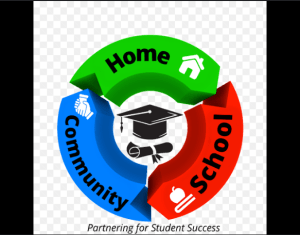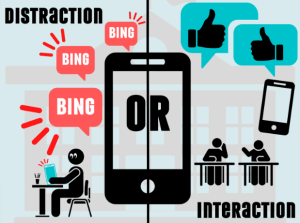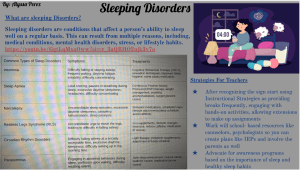
https://acpl.na4.iiivega.com/search/card?id=2d0ef912-3d7c-5465-9ddf-9d3c2b30572f&entityType=FormatGroup
As a future educator, I plan to work with any grade I choose. Since I am a special education major I can work with any grade but I am also an Adolescent major which means middle school to high school. I am not 100% sure which grade I will work with but NO matter what grade I end up with school violence will NOT end up in my classroom. School violence is a significant concern for teachers at all levels that we will have to be prepared for, and I think it could impact me in many ways. This could affect my sense of safety when I teach students in the classroom. I want students to learn “see something say something” because I think it is very important to stand up for yourself or somebody else. Knowing that a job like teaching can come with school violence, bullying, fighting, and more dangerous situations can maybe also add stress to my job. This can add stress in ways of being concerned for my students and when to take action. School violence can impact my children’s learning abilities. This can also impact me if I and my kids are put in a dangerous situation or when I need to be prepared to talk to a bully, talk to a child who is being bullied or handle a fight if I have to. If students are feeling unsafe or have that fear, their focus and well-being will suffer they won’t be engaged with the lessons and they will not be worried about their academic success. As a teacher that means I have to stick with managing my positive classroom setting so students feel supported. Teaching should be about inspiring, helping, and making an impact on students, but the thought of school violence happening adds more responsibility that can be a challenge.
In a world where school violence has become too common and a reality to live is a sad thing to say but it is the truth, so we must envision a future where our classrooms are safe spaces for all students. The fight to prevent school violence is crucial, and as future teachers, we must be motivated to create environments that reject fear and embrace the possibilities and success of a bright future for every student. Teachers have to be prepared for school violence whether witnessing violence throughout the hallways and taking it to the principal, handling it on your own, or practicing lockdowns in case of gun violence emergencies no matter what we have to be ready. Practicing for lockdowns is serious as well, when I experienced that in high school I remember students would always laugh, fool around, and not be serious when it came to that time but I never took it as a joke because you never know what can happen. As we had to read the article and according to these statistics “High school teachers are most likely to report experiencing these lockdowns: 34% say their school went on at least one gun-related lockdown in the last school year. This compares with 22% of middle school teachers and 16% of elementary school teachers” (Hurst, 2024). These statistics bring out the fact that these schools were experiencing lockdowns due to gun-related threats. This leads to fear and uncertainty which is the opposite of the vision of peace and a bright future for students. For a bright future, there needs to be a plan that lowers gun incidents, reduces fear, and provides a safe environment for learning. Students should not go to school in fear instead they should go to school feeling confident and comfortable and feel like powerful students. Also in the article they use the “worry” several times and I feel like students and educators shouldn’t have to worry about going to school or work or worrying about if they are safe. Also, lockdowns should not become a daily thing.
As we had to watch the “Bowling for Columbine” film Michael Moore highlights the role of media and how it leads to fear and I agree. When he states “The media sells fear, and the more we’re afraid, the more we’re willing to give up our rights” (Moore 2002). I agree with that because social media puts fear in a lot of people as well because everything spreads so quickly. But, if we keep letting it make us afraid then it plays a key role in how common violence becomes including in schools. To keep moving forward, we have to lose this cycle of fear and prevent it. I came across this article that said “Students who are exposed to school violence may begin to fear school, act more aggressively, be more likely to develop a children’s mental disorder, or become involved with the juvenile justice system” (Green 2020.) This quote really opened my eyes because I did not even think how many kids are out here experiencing that because of such violence being seen at such a young age. These are specific reasons why students should not be experiencing any more fear and should be experiencing fun, inspiring, different academic success and it is all for the better.
References
Ferrara, P., Franceschini, G., Villani, A., & Corsello, G. (2019). Physical, psychological and social impact of school violence on children. Italian Journal of Pediatrics, 45(1). https://doi.org/10.1186/s13052-019-0669-z
Green, E. (2020, November 23). Exploring School Violence and Safety Concerns. Icjia.illinois.gov. https://icjia.illinois.gov/researchhub/articles/exploring-school-violence-and-safety-concerns
Hurst, K. (2024, April 11). About 1 in 4 U.S. teachers say their school went into a gun-related lockdown in the last school year. Pew Research Center. https://www.pewresearch.org/short-reads/2024/04/11/about-1-in-4-us-teachers-say-their-school-went-into-a-gun-related-lockdown-in-the-last-school-year/Links to an external site.
Janosz, M., Archambault, I., Pagani, L. S., Pascal, S., Morin, A. J. S., & Bowen, F. (2008). Are there detrimental effects of witnessing school violence in early adolescence? Journal of Adolescent Health, 43(6), 600-608.
Moore, M. (Producer & Director) (2002). Bowling for Columbine [Film]. United States: Dog Eat Dog Productions/ YouTube https://watchdocumentaries.com/bowling-for-columbine/
https://www.instagram.com/lockdown_film/reel/C8zsuVDx6Xg/?api=1%2F&hl=zh-cn









